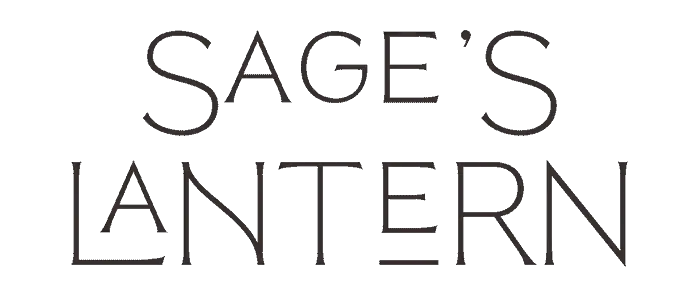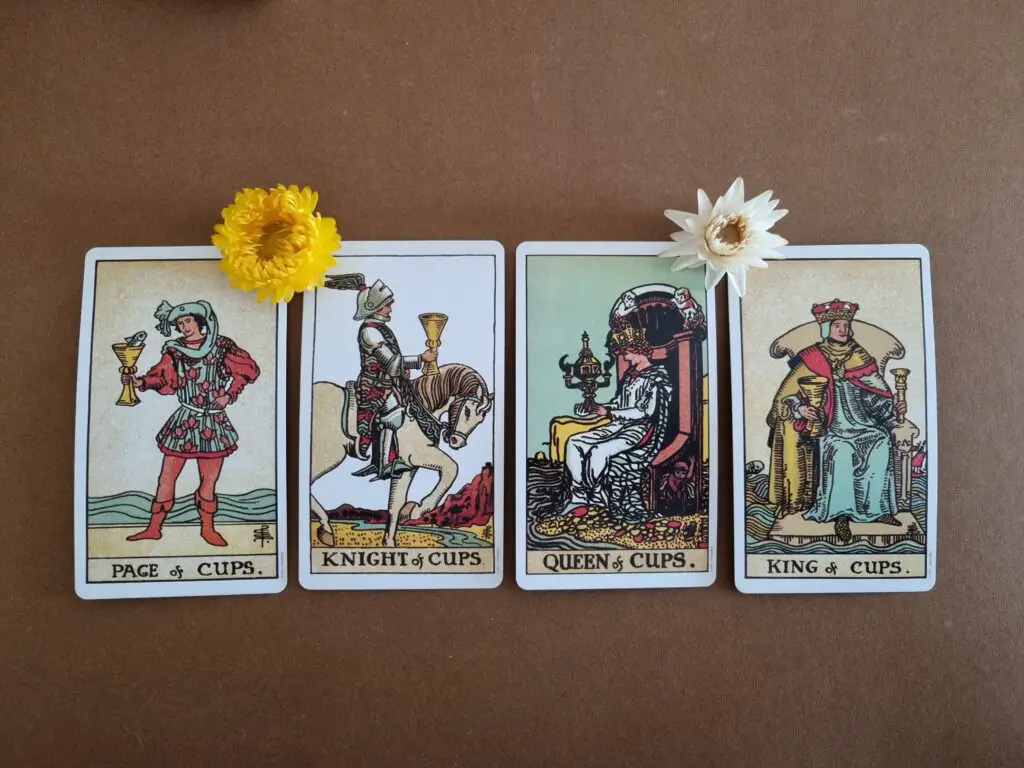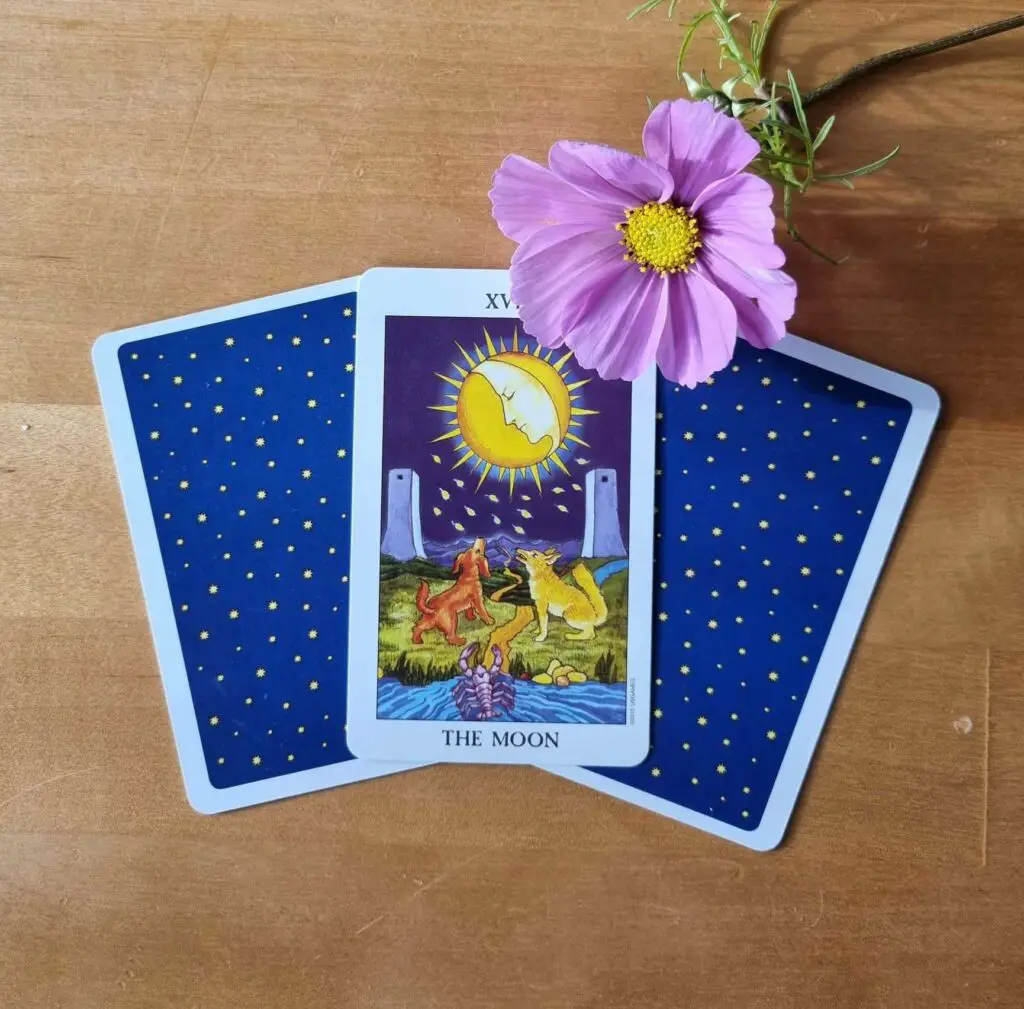You heard about the benefits of tarot journaling but are unsure what it is and how to use it. No one wants to look like a total newbie. Well, I got your back. In this article, you learn everything you need to know to journal like a pro.
A tarot journal is a physical or digital notebook. You take notes of your tarot readings, experiences, and milestones to gain a deeper understanding and insights. By going back to your notes you unlock answers you might miss at the time of the reading.
A tarot journal is a tool to get familiarized with your tarot deck and record your learning progress. You can go back to previous readings and reflect on the card meanings and the experience you had in real life. Journaling brings a deeper level to your understanding of card meanings.
WHAT A TAROT JOURNAL IS
A tarot journal is a digital or physical notebook in a bullet journal style or ready-made templates. You only need a journal, a pencil, and a tarot deck to get started.
You can also record your readings with a voice recording or use Google Sheets. This option is enjoyable as you can incorporate formulas to track important “metrics” for you – how often you get a particular card and so on. The possibilities are endless.
DIFFERENT TYPES OF TAROT JOURNALS
- Physical notebook (bullet, lined, blank)
- Digital journaling apps (Best journal apps of 2021 – link to Zapier)
- Voice recording
- Video recording
- Google Sheets (Google Sheets – link to Google)
- Templates (Daily card pull template by Biddy Tarot – link to Biddytarot.com)
- Sketchbooks
- Notetaking apps
- Yearly calendar
The idea with a tarot journal is to get deeper insights into your readings as you can go back and reflect on them. When you go back to older readings, you notice what you thought might happen and what happened. In this way, you gain a deeper understanding of the personal meanings of the cards.
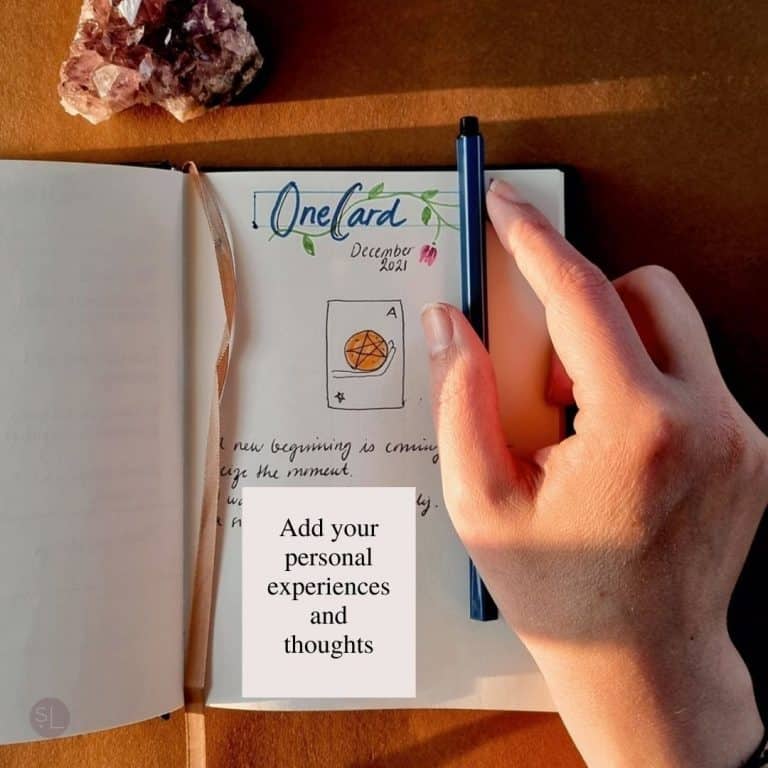
As you notice, you don’t have to be super artsy to journal. Many get stressed out by beautiful bullet journals, but you don’t have to go all-in if you don’t want to.
The most common journals are dotted (bullet), lined, or blank. The easiest to get started with is a bullet journal if you want to get a bit artsy and craftsy. You can also choose a sketchbook if you’re using watercolors or alike. My favorite sketchbooks for watercolors are Moleskins.
A lined notebook is better if you are mostly going to write notes.
Below you find my favorite sketchbook from Moleskin. The one I use right now is a watercolor paper one, but this one is better for pencils and markers, in my opinion.
My absolute go-to for notebooks and journals are Paperblanks. I love their vintage style and the fairytale mood. You find a link to Amazon below (Paid Link).

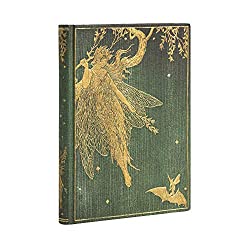
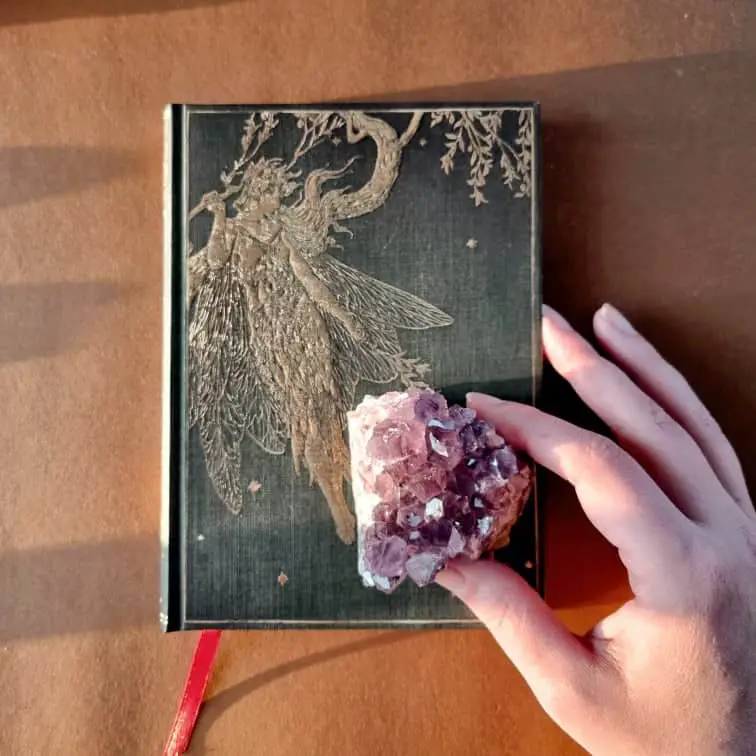
This is my favorite Paperblanks notebook ever. It’s midsize and so beautiful as it works as decor for your reading area. I use it in my pics for social media, just because it is so beautiful. There are lined and blank alternatives.
HOW TO USE A TAROT JOURNAL
I don’t journal every day, but I tend to record readings I feel are important. My gut feeling tells me when it’s time to pick up my journal. Everyone does this differently. Some journal every day, some once in a while, and some never.
I also take notes of spreads I love and experiences of decks. When I meditate on cards, I usually jot down my experience. As you notice, there are no rules here. You do what you feel is right for you.
IDEAS FOR TAROT JOURNALING
When you start journaling, please keep it simple. It’s easy to get overwhelmed if you look at beautiful journals on social media. It’s a world of its own. Remember the goal for your tarot journal – to gain deeper insights into your understanding of tarot – not to have the fanciest journal out there. It’s easy to get into the competitive downward spiral. Tarot is NOT about being best, but being you.
With that said, here are some great ideas to get started.
TAROT JOURNAL IDEAS
- Readings you feel are “important” (go with your gut feeling here)
- Your favorite spreads
- Daily card pulls
- Your favorite questions to ask in a reading
- Experiences that made an impact on you
- Reflections after a meditation on a card
- Light bulb moments in your tarot learning
- Important milestones
- Your favorite crystal practices
- Your favorite incense rituals
- Your favorite decks
- Wishlists (new tarot decks etc.)
- Roadblocks and frustrations
The most important thing is to keep it simple and leave the feelings of perfection away.
To keep things neat, many use symbols for the cards. There are no “right” or “wrong” symbols to use.
CARD SYMBOLS FOR EASY JOURNALING
To keep journaling fast and easy many use symbols for the cards. Here are the symbols I use when I journal. Of course, you can alter them if you want to. They are made from mental prompts from the card image (Rider Waite deck).
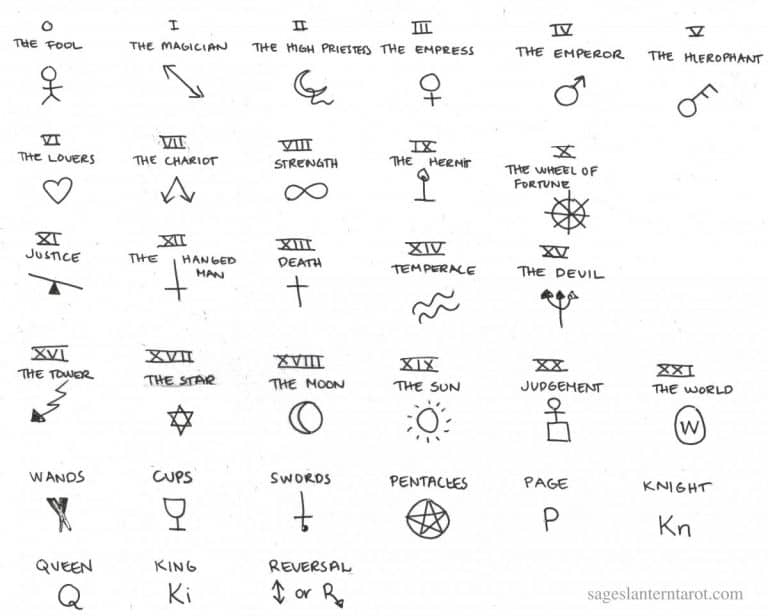
To make it easier to follow along, I made examples for you. In the photos, you see the card and the symbol. It’s very straightforward.
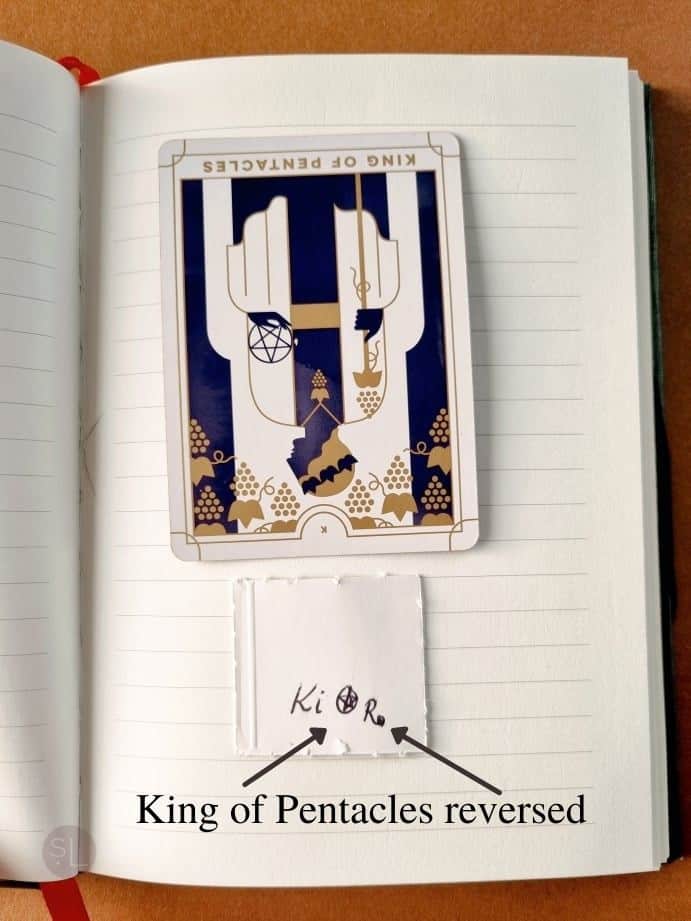
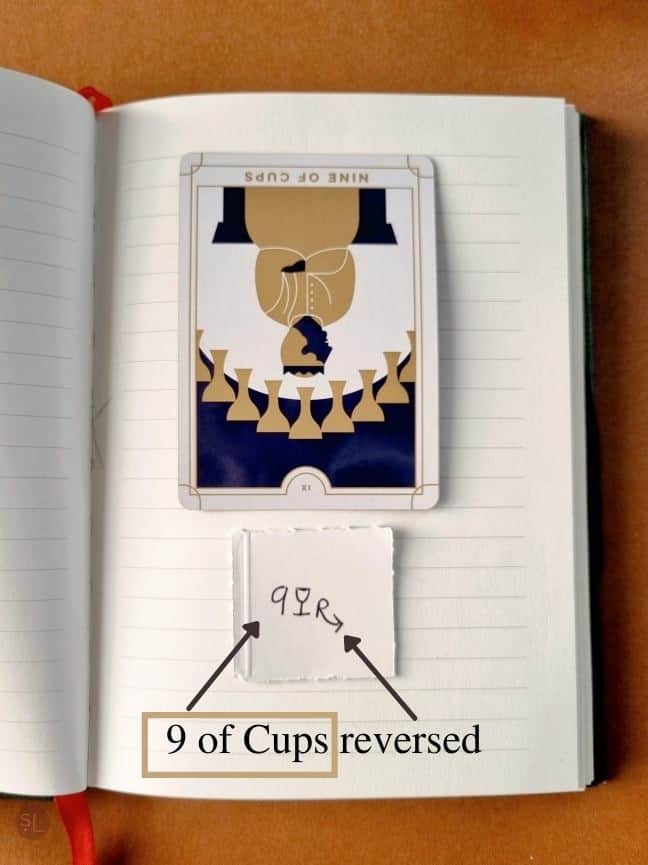
HOW TO JOURNAL LIKE A PRO
If you want to dive deeper into the world of tarot journaling, I find the videos from BohoTarot on YouTube very inspirational and helpful. This is a series of three videos I enjoy. The journals are beautiful and crafty.
43% OF TAROT READERS USE A TAROT JOURNAL
I created a survey in the Tarot Professionals Facebook Group, which was surprising! 43% of the readers stated they used a tarot journal of some kind. I thought the numbers might be lower as it takes a lot of energy and dedication to keep a tarot journal.
In total, at the time of writing this article, I got 133 answers. A majority, 43%, of the readers stated they used a tarot journal in their practice. 36% said they didn’t. So it’s pretty close between the camps.
A few answered they wanted to start journaling or do it occasionally, or used to.
We take home from the survey that it is common to use a tarot journal.
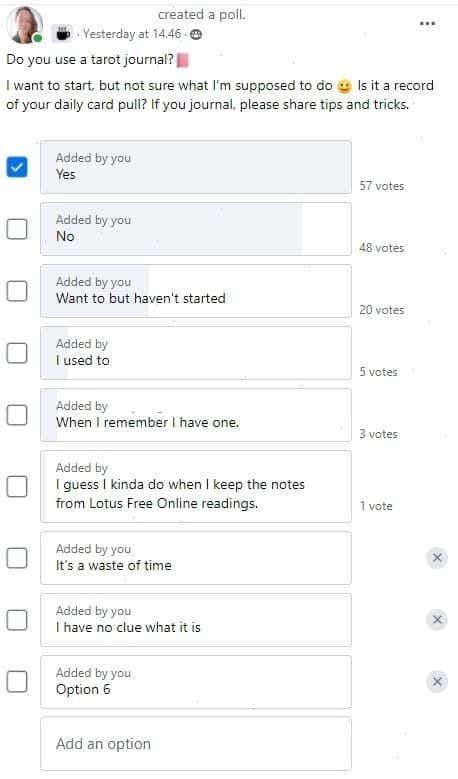
I added all the information from the survey in the table below. I comprised it a bit as some of the added alternatives were in the same category, “occasionally.”
| Answer | Number | % |
|---|---|---|
| Yes | 57 | 43% |
| No | 48 | 36% |
| Want to | 20 | 15% |
| Used to | 5 | 4% |
| Occasionally | 3 | 2% |
| Waste of time | 0 | 0% |
| Don’t know what it is | 0 | 0% |
MINDFULNESS AND RELAXATION
I use tarot journaling for mindfulness and relaxation. Doodling down my ideas, feelings, and thoughts helps me stay grounded in times of turmoil and get more clear answers.
You don’t have to fancy stuff to journal if you don’t want to, but I enjoy the Papergang stationery box I receive every month very much. The box includes lots of pens, journals, papers, craft stuff, stickers, stencils, and other great stuff when journaling.
The great thing is that you get a new one every month. This helps me stay motivated.
In the pic below is my latest box, but with random Papergang stuff displayed (and my beloved Amethyst). If you want to take a look at the box, you find a button below (Paid Link – Papergang.com)
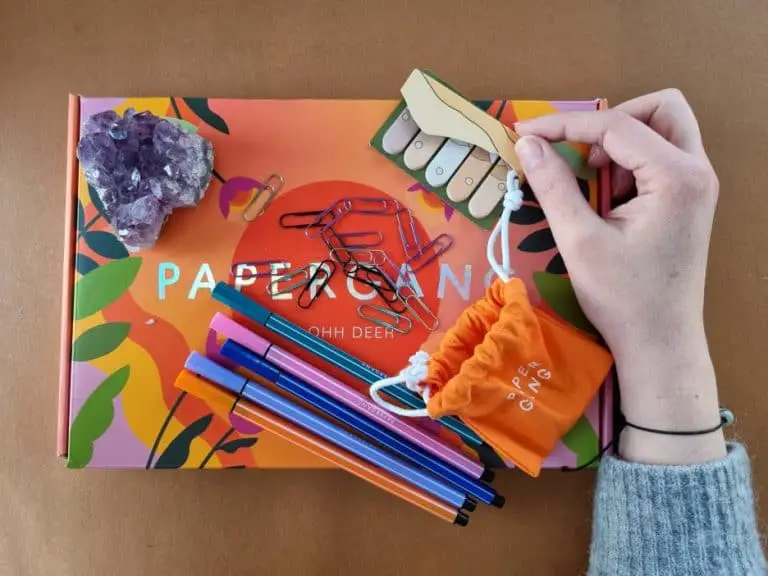
BENEFITS OF USING A TAROT JOURNAL
You get new perspectives and more profound insights when you journal. As you evolve as a reader, you soon realize that the card meanings in your reference book don’t always align with your experience with the card.
It’s also a great way to connect with your cards as you have to slow down and really “think” as you write. It’s easy to get carried away by quick thoughts. When you see them on paper, things often get clearer.
A journal has a magical way of surfacing subconscious messages. In the heat of the reading, the Ego sometimes makes it hard for us to take in the truth. The Ego has its way of shielding us at times.
IN SUMMARY
Using a tarot journal helps you get deeper insights into your personal experiences of the card meanings and tarot decks. You can use a digital or physical notebook; it’s all up to you and your vibe.
Take notes of your readings, experiences, breakthroughs, light-bulb moments, and setbacks. By retrospectively going back to older readings, you notice patterns and messages you initially might have missed.
It’s common to use a tarot journal. 43% said they used a journal in a survey I created on Facebook.
You can get as crafty and artsy as you want, but don’t let that be the measurement of how successful your journaling is. The most important thing is to have information recorded from earlier readings – not that you have the prettiest journal of them all.
Use card symbols to keep your notes short and on point if you want to. Create your symbols, or use the chart above.
You can keep it as complicated or simple as you want. Everything from a Google Sheet to an artsy journal is ok. Nothing is better than another.
Remember that you started this tarot practice for you and no one else. Have fun exploring the wonderful world of tarot journaling!
THE DEFINITIONS IN THIS ARTICLE ARE BASED ON THE RIDER WAITE DECK AND SYSTEM.
Recent Post
- Tarot Court Cards: What They AreNot sure what tarot court cards are or look like? No worries, in this article, you learn everything you need to know to identify and understand them.
- 5 Powerful Tarot Spreads for Dream InterpretationThe 5 most potent tarot spreads for interpreting your dreams. A list of common symbols is included.
